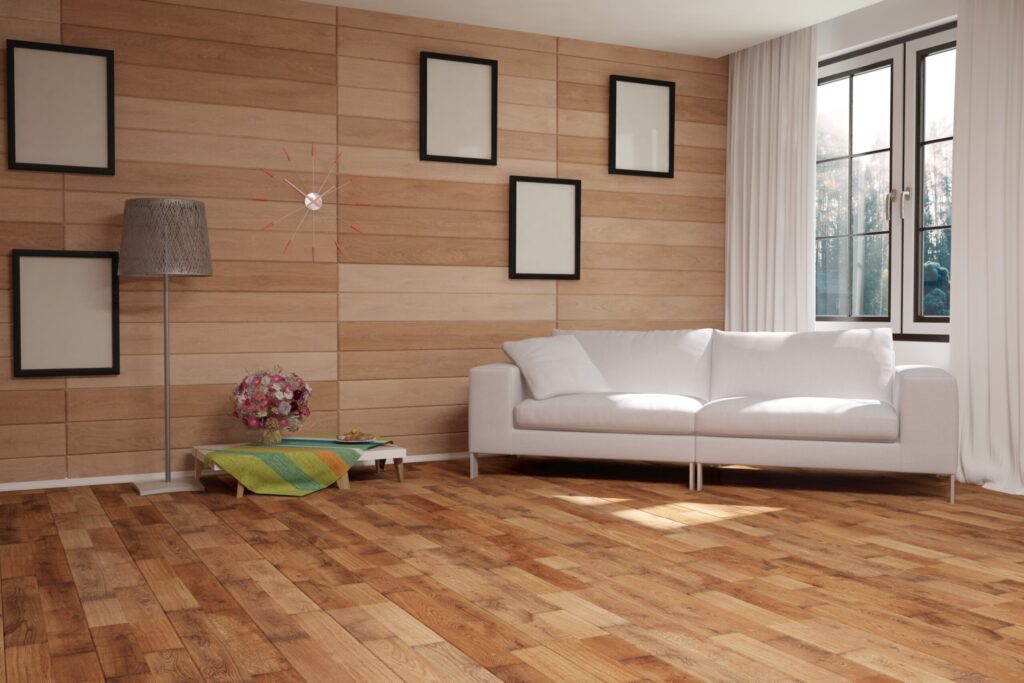Floors might not speak, but they definitely send signals when something’s wrong. Whether it’s a mysterious creak, a few warped boards, or scratches that seem to multiply overnight, your flooring is often the first place wear and tear shows up—and the last thing most of us want to deal with.
But here’s the good news: catching issues early can help you avoid bigger headaches down the line. The challenge is knowing when a simple fix will do the trick, and when it’s time to consider a full replacement.
This post is here to guide you through exactly that. We’ll walk you through the most common signs of damage, show you when flooring repair makes sense, and explain when it’s smarter (and more cost-effective) to replace your floors altogether. If you have hardwood flooring, we’ll also dive into when it can be restored versus when it’s beyond saving.
Whether you’re a homeowner trying to preserve your investment or just someone sick of that squeaky floorboard in the hallway, you’ll leave with a clearer idea of what to do next—and how to find the right help when it’s time to call in the pros.
Common Signs Your Flooring Needs Repair
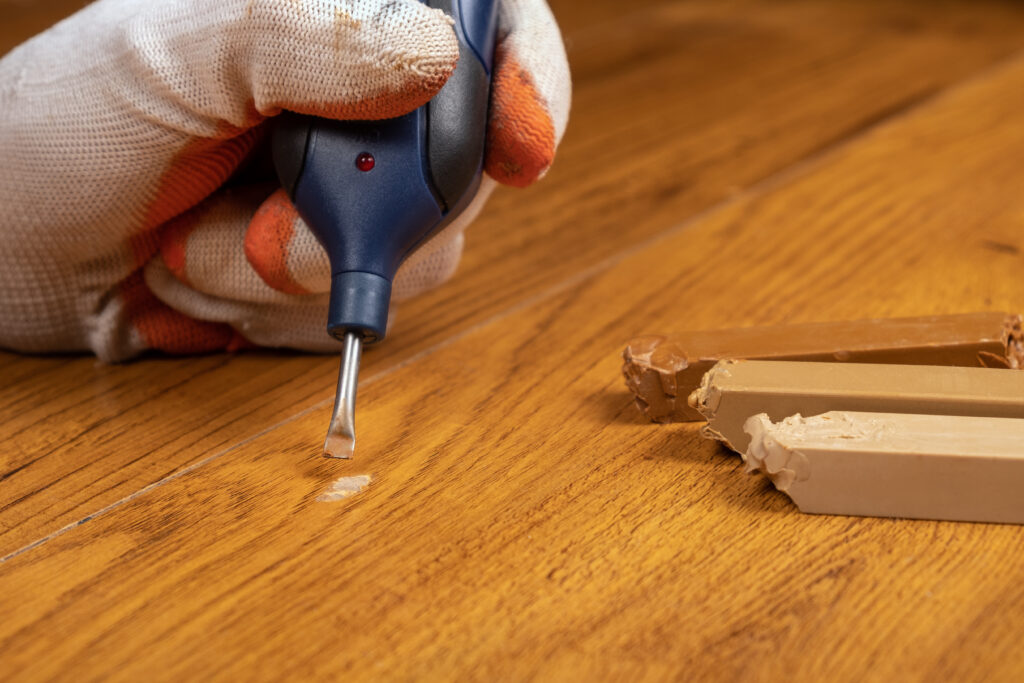
Your floor puts up with a lot—foot traffic, furniture, spills, pets, and just everyday life. Over time, it starts to show signs of wear. The key is knowing which of those signs are just cosmetic and which ones mean it’s time to call in help for flooring repair.
One of the most common clues is surface damage. Minor scratches, dents, or small chips can often be fixed without replacing entire boards. These are especially common in high-traffic areas like entryways and kitchens. If your floor looks a little tired but is still structurally sound, a simple patch or refinishing might do the trick.
Another red flag is movement. If you feel the floor shift beneath you, or hear persistent squeaking in certain spots, that could mean the subfloor is loose or the fasteners are wearing out. While it might not seem serious, ignoring it could lead to more costly repairs down the road.
Water stains or small patches of discoloration can also indicate a problem beneath the surface—especially with hardwood. These spots could mean moisture has seeped into the wood, but depending on how far it’s spread, flooring repair may still be an option.
In short, if the damage is isolated and your floor still feels stable underfoot, there’s a good chance you can fix what’s there instead of starting from scratch. And if you’re not quite sure? A quick inspection by a flooring repair pro can help you decide what makes sense.
When Repair Isn’t Enough: Signs It’s Time to Replace
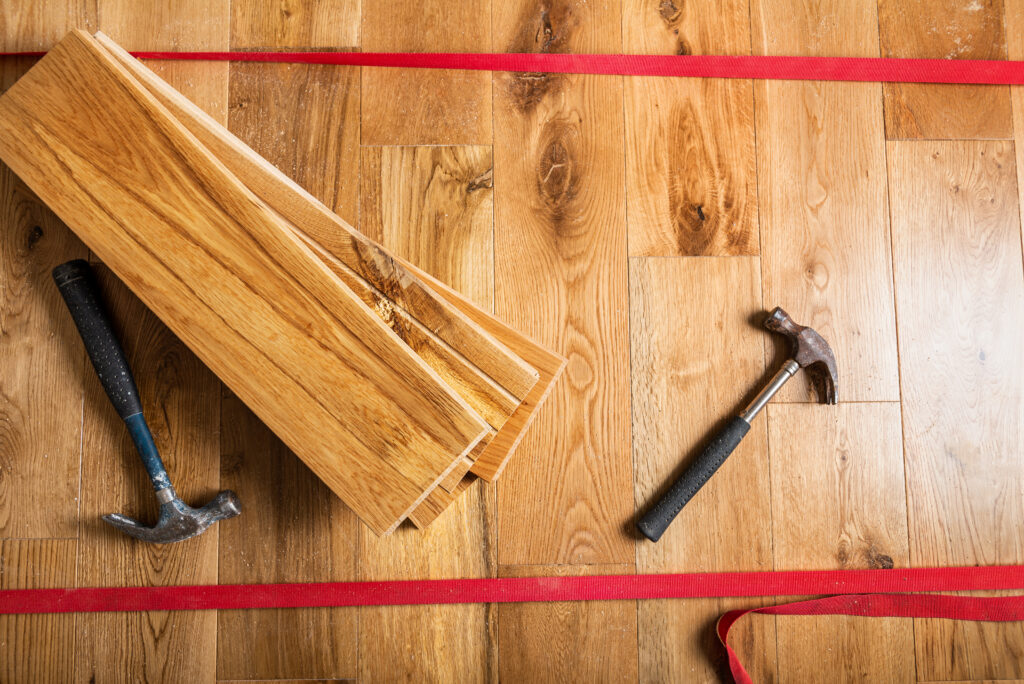
There comes a point when fixing up your floor feels like putting a bandage on a bigger problem. While flooring repair is a great option for minor damage or early wear, it’s not always the right solution—especially when the problems go deeper than the surface.
One major red flag is structural damage. If your floors are sagging, warping, or showing signs of rot, that likely points to a bigger issue beneath the surface. These problems often stem from long-term moisture exposure, and no amount of sanding or patching will fix them for good.
Another sign? You need flooring repair for the same areas again and again. Recurring issues like boards popping up, deep cracks, or persistent squeaking often mean the floor’s integrity has been compromised. At some point, the cost of repeated flooring repair starts to add up—and replacing the floor becomes a smarter long-term investment.
Mold or mildew smells, even if you can’t see them, are another warning sign. If moisture has made its way below the flooring and into the subfloor, you’re not just dealing with damage—you may also be looking at a potential health hazard. In that case, full replacement is usually the safest option.
And then there’s age. If your flooring is decades old, showing widespread wear, or just no longer fits the look of your home, replacement gives you a fresh start with updated style and durability.
The bottom line? When the damage is deep, widespread, or recurring, replacement can save you money and stress in the long run. In the next section, we’ll talk about why hardwood flooring is often worth saving—and how to know when it’s still got life left in it.
The Case for Hardwood: Why Some Floors Are Worth Saving
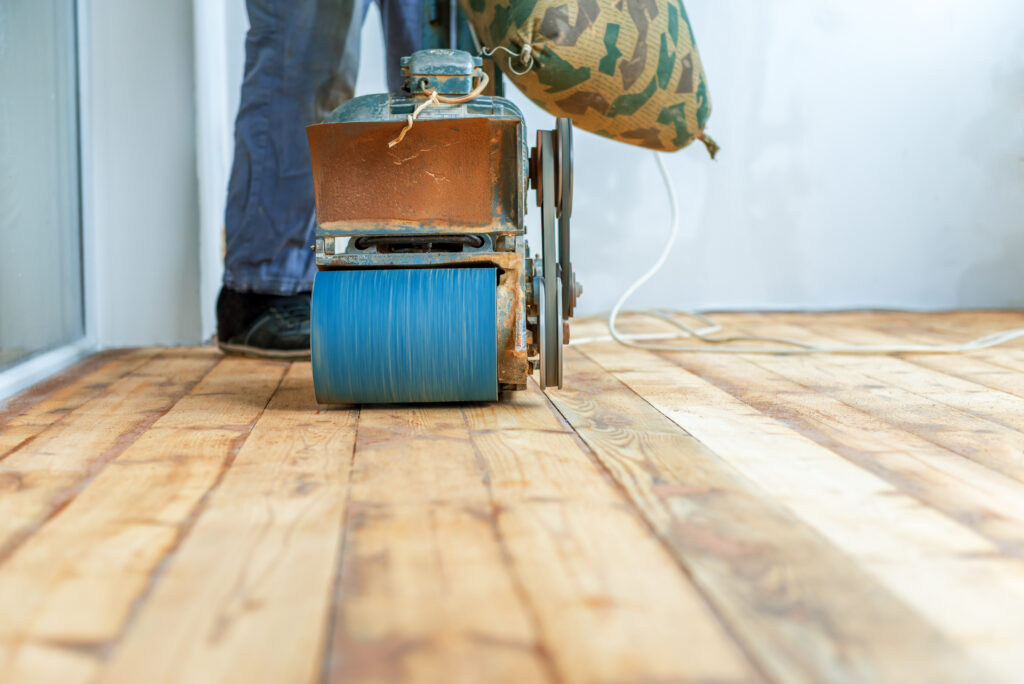
If you have hardwood floors, you’re in luck. One of the biggest benefits of hardwood flooring is its ability to bounce back with the right care. Unlike other types of flooring, hardwood can often be refinished, repaired, or spot-treated—giving it new life without the need for full replacement.
Small scratches, minor stains, or dull spots might look like signs of aging, but they’re usually just surface-level. In many cases, sanding and refinishing the top layer is enough to restore the original beauty of your wood floors. You can even change the stain color or finish during the process, giving your space a fresh, updated look.
That said, not all damage is fixable. If your hardwood planks are deeply gouged, warped from moisture, or have been sanded down multiple times before, there may not be enough material left to work with. In those cases, replacing the affected boards—or even the entire floor—might be the safer and more cost-effective choice.
Still, hardwood is incredibly durable when maintained properly. Regular cleaning, protective pads under furniture, and quick action on spills can extend its life by decades. And if you catch damage early, a small repair job can prevent bigger problems from developing later.
Before jumping to conclusions, it’s a good idea to have a flooring specialist assess the condition of your hardwood flooring. Sometimes, what looks like serious wear is just cosmetic—and completely fixable with the right tools and techniques.
Coming up, we’ll take a closer look at when replacement is truly the best move, especially for homeowners in places like Chicago where weather and foot traffic can put extra stress on your floors.
Hardwood Floor Installation in Chicago: When Replacement is the Better Investment
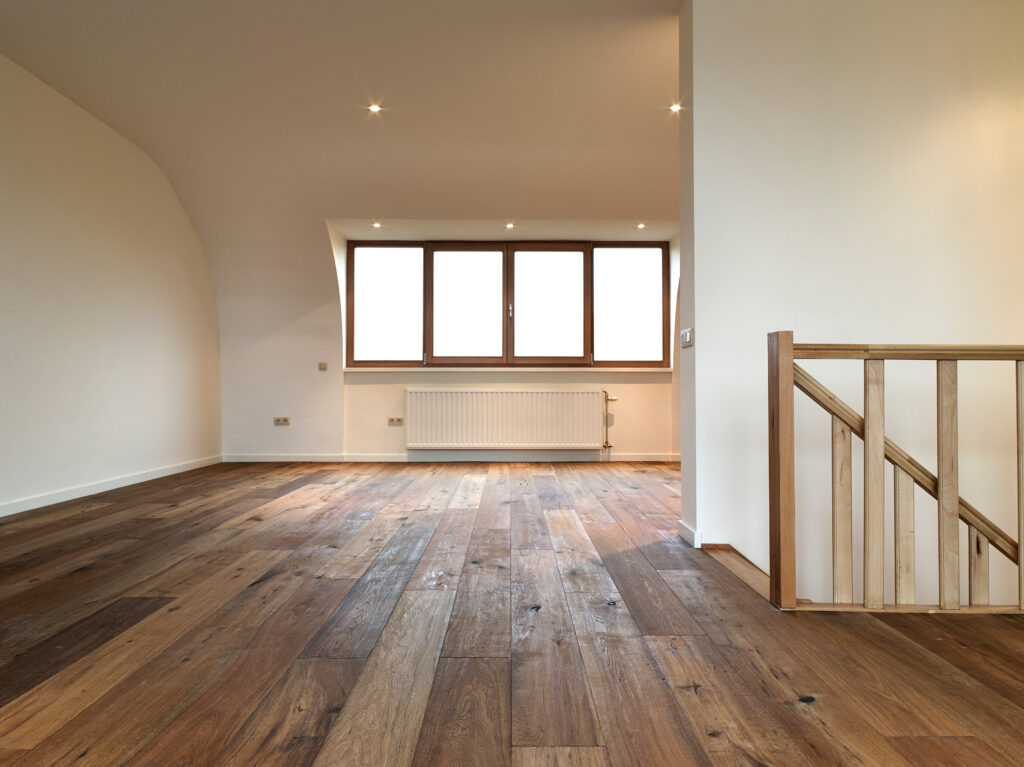
Sometimes, no matter how much care you’ve put into your floors, repair just isn’t enough—and that’s okay. If you live in a busy city like Chicago, where winter salt, heavy boots, and fluctuating humidity can really take a toll on your floors, full replacement might not only be necessary—it can be a smart investment.
Opting for hardwood floor installation in Chicago gives you more than just a cosmetic upgrade. It offers long-term durability, better energy efficiency (especially with proper underlayment), and an instant boost in property value. Plus, new hardwood is easier to clean, more resistant to damage, and a major selling point if you ever plan to list your home.
One of the advantages of starting fresh is choosing the style, finish, and wood species that fits your space today—not what was trendy 20 years ago. Whether you’re going for a warm, rustic oak or a sleek, modern maple, the options are virtually endless—and many are more resilient than older materials.
In Chicago specifically, seasoned installers also know how to account for seasonal expansion and contraction, which is crucial for preventing warping and gapping in the long run. This regional expertise is one reason why working with a local pro is so important.
While replacement can feel like a big step, it’s often the right call when repairs become too frequent, the subfloor is compromised, or your current floors just aren’t holding up. And when done right, hardwood floor installation in Chicago can leave you with floors that look better, perform better, and last for decades.
Also read: Hardwood Floor Installation in Chicago: What to Expect From Start to Finish
Choosing the Right Pros: What to Look For in Local Flooring Installers
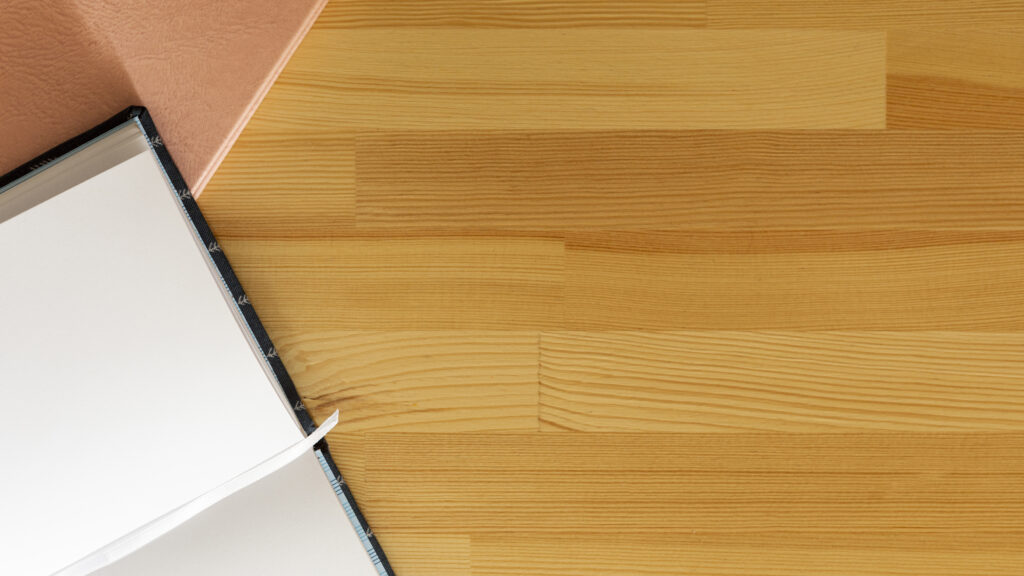
Whether you’re leaning toward a simple repair or planning a full floor replacement, one of the most important decisions you’ll make is who to trust with the job. And let’s face it—not all contractors are created equal. The good news? Finding the right help doesn’t have to be overwhelming.
Start by searching for flooring installers near me and take your time reviewing the top-rated local options. Look for companies with solid reviews, clear portfolios of past work, and transparent pricing. A good installer should be able to explain your options, provide a detailed quote, and answer your questions without any pressure or guesswork.
Experience matters—especially if you’re working with hardwood. You’ll want someone who understands how to handle subfloor issues, work around tricky layouts, and install with attention to long-term durability. And if you’re in a place with seasonal temperature swings, like Chicago, choosing a pro who knows how to account for climate-related expansion and contraction is a must.
Don’t be afraid to ask questions: Are they licensed and insured? Do they offer warranties? How long have they been in business? A trustworthy installer will welcome those questions and be proud to walk you through the process.
And finally, trust your instincts. Communication, professionalism, and attention to detail during the consultation phase often reflect the kind of service you’ll get once the work begins.
Taking the time to find the right team ensures your flooring project—whether it’s repair or replacement—is done right the first time, with results you’ll be proud to live with for years to come.
Listen to Your Floors—They’ll Tell You What They Need
Your floors deal with more than you think—foot traffic, spills, furniture moves, pet claws, and everyday life. Over time, they start to show signs of age and stress. The key is knowing whether it’s time for a quick flooring repair or if your space would benefit more from a full replacement.
We’ve covered the subtle (and not-so-subtle) signs that suggest your flooring needs attention. From minor surface scratches and squeaks to deeper damage like warping or mold, every situation is different. If you’re working with solid hardwood, you might be able to save it with refinishing. But when flooring repairs no longer make financial or structural sense, replacement is often the smarter, longer-lasting choice.
Especially if you’re considering new hardwood floor installation in a city like Chicago, it pays to weigh your options carefully and work with experienced professionals who know the local climate and materials.
If your floors have been bothering you lately—visibly or underfoot—it might be time for a professional opinion. Reach out to trusted local pros, search for reputable flooring installers near you, and get a clear idea of what your next step should be.
Whether it’s a quick fix or a total refresh, giving your floors the attention they need will make your entire home feel more solid, stylish, and comfortable.

